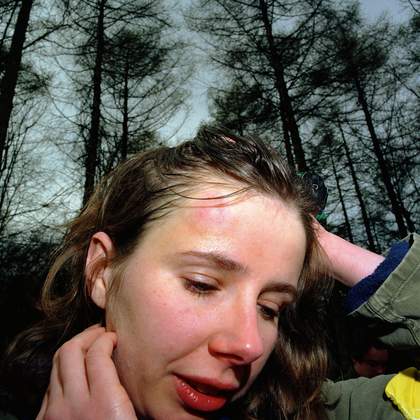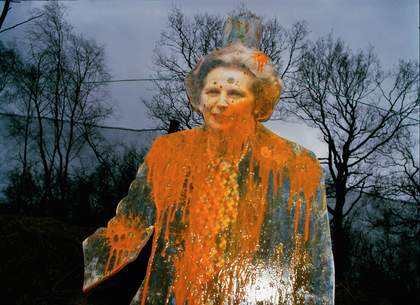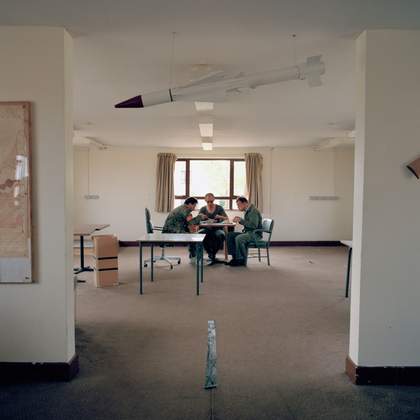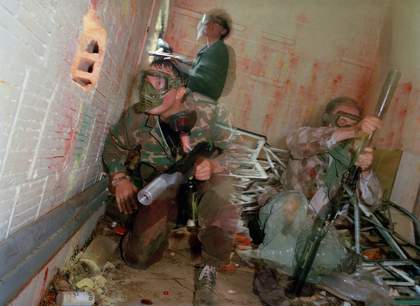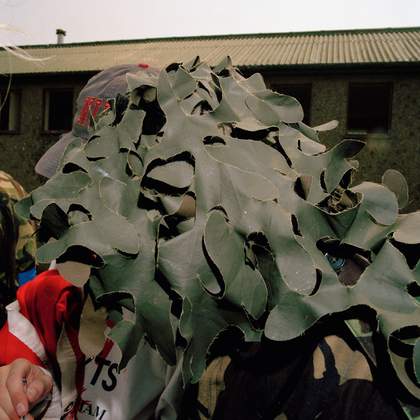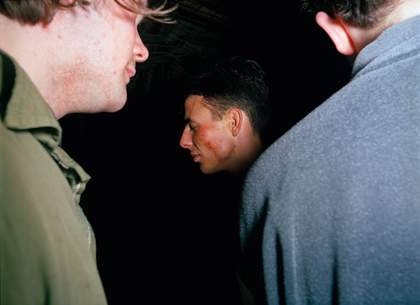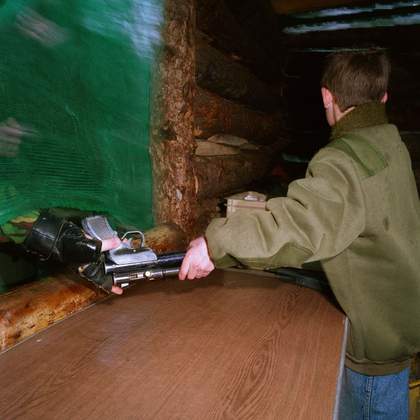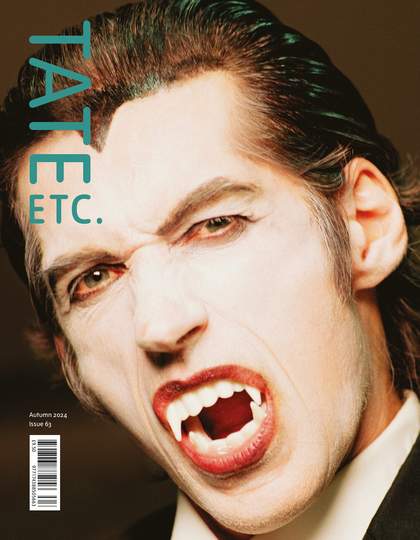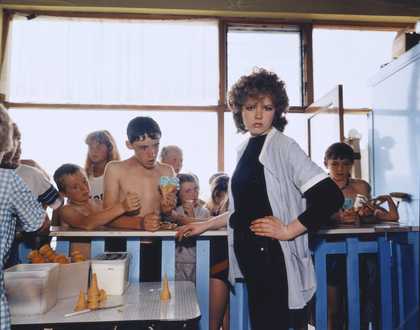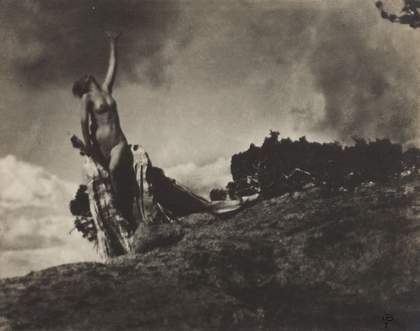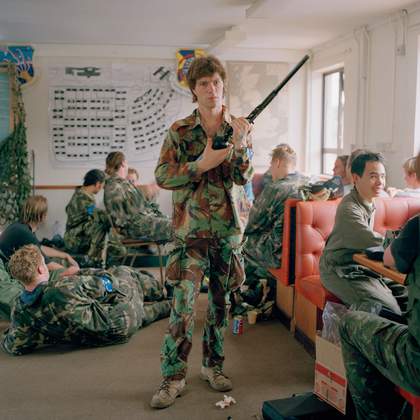
Anna Fox
Player from the series Friendly Fire 1989
© Anna Fox, courtesy Centre for British Photography
While I was working on my photographic series Work Stations 1987–8, which attempted to capture the essence of office life in Margaret Thatcher’s Britain, I came across paintball for the first time. Sales teams would take part in these games to increase their team spirit and competitiveness.
Two of my close friends had come back from the Falklands War suffering from post-traumatic stress disorder (PTSD), neither of whom received any support. One of them had been part of a group involved in a friendly fire incident, and the stories of what had happened to them were heartbreaking. This fuelled my interest in the way we celebrate and play at war through leisure activities. What on earth is fun about it?
The paintball players came in teams and worked together. Sometimes they were participants in a company training project, but mostly they were part of social groups. I vividly remember the sight of some city nightclub bouncers arriving at a Hampshire woodland in an old Jaguar, and getting out all the weapons they had brought with them from the boot of the car. Unfortunately, my photograph of the scene didn’t quite work.
Each morning, I arrived early and simply followed the action for the whole day. It was a very strange experience: a lot of the time nothing happened, and then suddenly a group would jump out from where they had been hiding and the action – usually brief – would start. Players often froze their ammunition so that the balls of paint really bruised if they hit you. Each moment of action was quite terrifying, and players often found it funny to ‘shoot the photographer’.
Once I started photographing the paintball games, I realised how visually striking they were. I also became interested in the locations where they took place: disused farmland and closed-down hospitals. The farms had been set aside with government support, because the UK had been overproducing, while the hospitals had shut due to a lack of government funding.
The players used a picture of Thatcher as target practice, and that image was important to me, since much of what I was trying to critique in my work had come about through her government and her actions. She was flanked by two others – Mr T from The A-Team and Jason Connery in his role as Robin Hood from the ITV series Robin of Sherwood. Using this group as targets seemed very sinister to me, and a poor reflection on the values of a patriarchal society.
I started the work as an observer, but after a while, I felt as if I was playing the part of war photographer just as much as the participants were playing at soldiers. It was awkward and unreal. I am now working on a book of Friendly Fire 1989, since the whole series has never been shown together.
Images, first to last: Injury (2), Margaret Thatcher Target, Lunch Break, Battle Scene, farmland, Camouflage, Injury (1), Distribution Point, all from the series Friendly Fire 1989 by Anna Fox. © Anna Fox, courtesy Centre for British Photography
Margaret Thatcher Target from the series Friendly Fire and photographs from Anna Fox’s Work Stations series are included in The 80s: Photographing Britain, Tate Britain, 21 November 2024 – 5 May 2025.
Anna Fox is a photographer who lives in Hampshire. She is Professor of Photography at University for the Creative Arts at Farnham.
Supported by Tate International Council and Tate Patrons.

